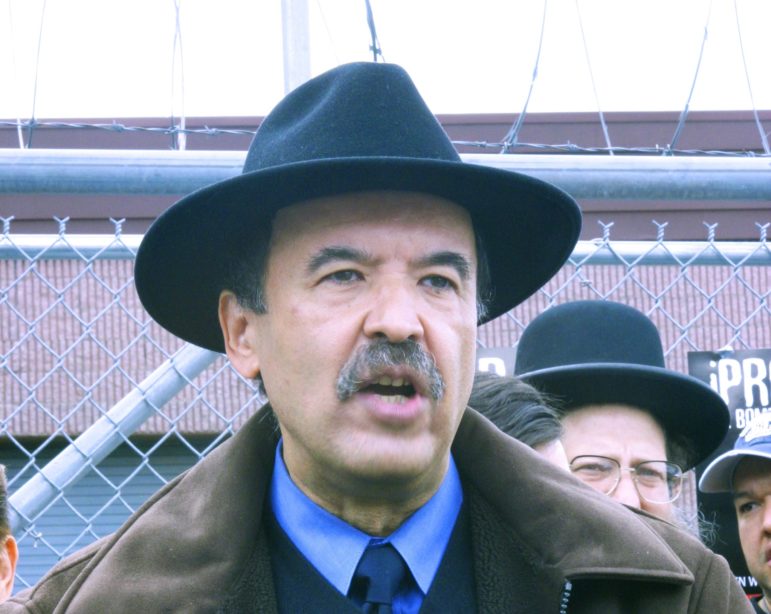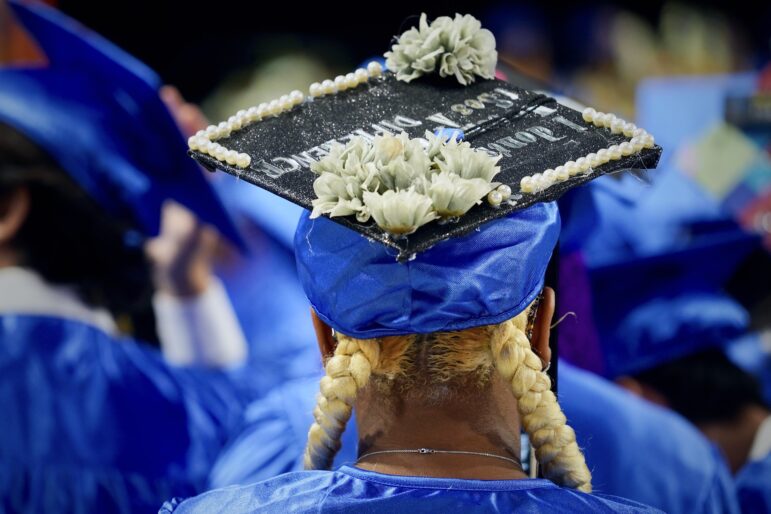
Shirley Rodriguez
Luis Garden Acosta
New York’s real estate moguls love to plant their names atop their towers. Never mind that they never laid a brick in their lives, the name is supposed to say ‘I built this. It’s mine.’
Meanwhile, the names of the city’s real builders, who labor for decades in the toughest neighborhoods, are nowhere. Their accomplishments, everywhere.
One of the greatest of these, Luis Garden Acosta, died last week at the age of 73 and to walk the streets of Williamsburg’s Southside is to be reminded how much that now burgeoning neighborhood owes to him.
The organization he created, El Puente, sits in a former church, St. Mary of the Angels, across from the little park beyond which the rumbling traffic and trains rush across the Williamsburg Bridge. When launched in the early 1980s, he was urged by some to use the English word for “bridge” so that the group’s mission would be universally understood. No, said Acosta, a son of a Puerto Rican mother and Dominican father, let them learn our word. And so it is that generations of non-Spanish speakers since know well this one word, EL PEW-WENT-AY, and all the hope and good deeds that it invokes.
He had crossed many of his own bridges before he arrived on the Southside. Raised a couple of Brooklyn miles south in Fort Greene, he was inspired as a young man by the local parish priest named John Powis who viewed his own mission to use his churchly role to help empower the poor. Acosta joined the seminary, but his plans to join the priesthood were interrupted when he watched Rev. Martin Luther King Jr. describe his own dreams for change. “It was as though he was speaking to me,” Acosta later told an interviewer. “Every word he was speaking was embedded in my soul.” Maybe change can’t wait for me to become ordained? Acosta thought.
He was soon organizing in East Harlem with a group of Puerto Rican radicals who called themselves The Young Lords. There, the desperate need for community health focused his attention and he found a way to attend Harvard’s medical school.
He brought those lessons with him to Greenpoint Hospital, the long-since shuttered municipal medical facility in East Williamsburg that treated the poorest of the poor. In the emergency room he watched the steady parade of youths gravely wounded by gang gunfire. “Do it again!” he urged the doctors and nurses as they sought vainly to revive a dying young woman. “Do it again!”
In 1981, he counted 48 dead. “It was the killing fields,” Acosta said of the deadly era. One solution to this community health crisis, he thought, would be to interrupt the cycle of violence by recruiting youngsters before the lure of the gangs drew them in. El Puente opened its doors later that year. Acosta travelled the neighborhood to tell people what he had in mind: a school that would emphasize human rights and dignity; a community center that would train teens in the arts and culture and the history of the people of the Southside; a locus for organizing for the health, housing and education needs in a neighborhood short on all of those necessities.
Today, around the corner from the little chapel on South 4th Street where he began, the walls of Middle School 50, El Puente Community School, boast a mammoth mural, created by the teens Acosta recruited. It depicts the neighborhood and its people – “a lasting record of the fascinating history of the community of Los Sures” – the Southside. A few blocks away is the El Puente Academy of Peace and Justice, the alternative high school started by Acosta and his wife Frances Lucerna after they helped shut down the violence-plagued school that preceded it. The high school is now located in the former home of the Catholic grammar school behind Transfiguration Roman Catholic Church on Marcy Avenue.
Other monuments are more subtle. In the 1990s, City Hall announced plans to build a mammoth incinerator on the grounds of the sprawling Brooklyn Navy Yard that borders the Southside. It was to be 55 stories high and, environmental studies showed, the potential toxic flume from its stacks would pollute the neighborhood and its children. A squadron of the city’s power elite, including lobbyists close to the mayor, had been enlisted to push the project through.
Acosta’s response was to build yet another bridge: For the first time in a neighborhood long bitterly separated along racial and religious lines, where pitched battles were fought for turf and government funding, he reached out to the leaders of Williamsburg’s large Hasidic population. “Everyone breathes the same air,” he said. In a remarkable show of community solidarity, Jewish and Latino residents marched side by side across the Williamsburg Bridge, all the way to Midtown Manhattan to protest the plan.
The incinerator plan eventually collapsed, a giant slain by all the Davids that Acosta had skillfully enlisted. Today, where the enormous furnace was to sit, the Navy Yard boasts a vast and successful movie and television studio.
Some of those stories were told last Friday evening inside the chapel on South 4th Street where members and staff of El Puente, along with neighbors and admirers, gathered in a semi-circle of chairs facing a large portrait of the group’s founder. The photo showed Acosta a few years ago. His mustache was a little darker, his hairline a little lower than it was in the last years. But he wore the same serene smile that never seemed to leave his face. “He was gentle, but in a fierce way,” said someone in the circle.








